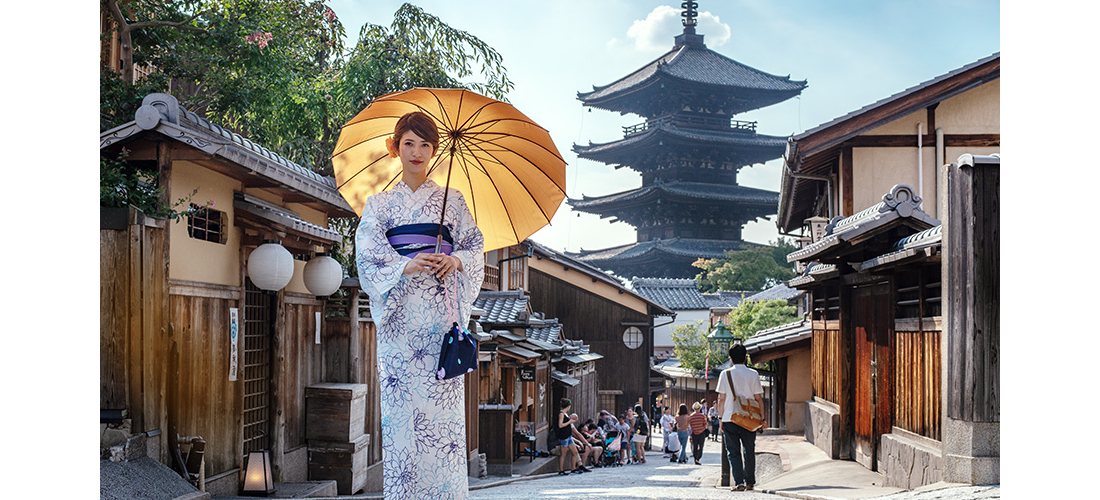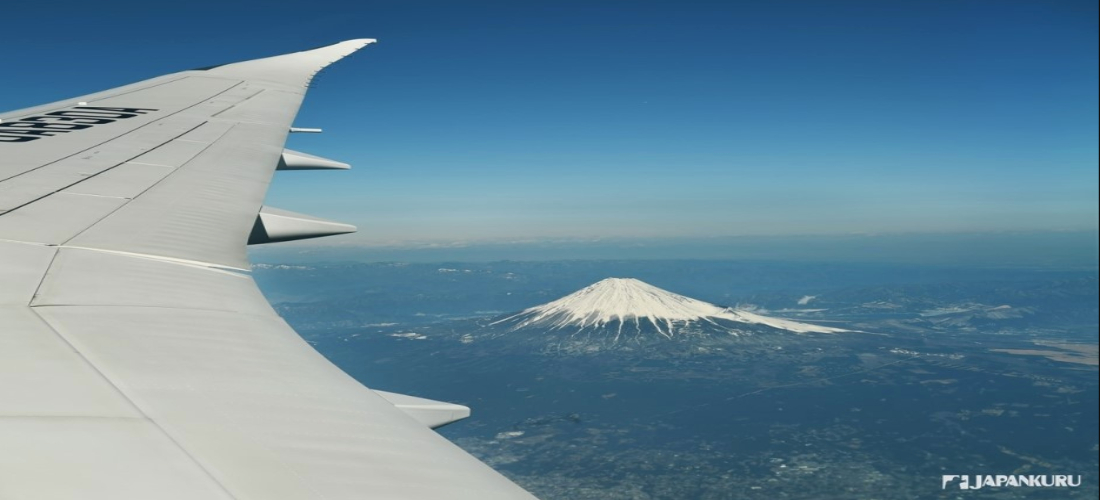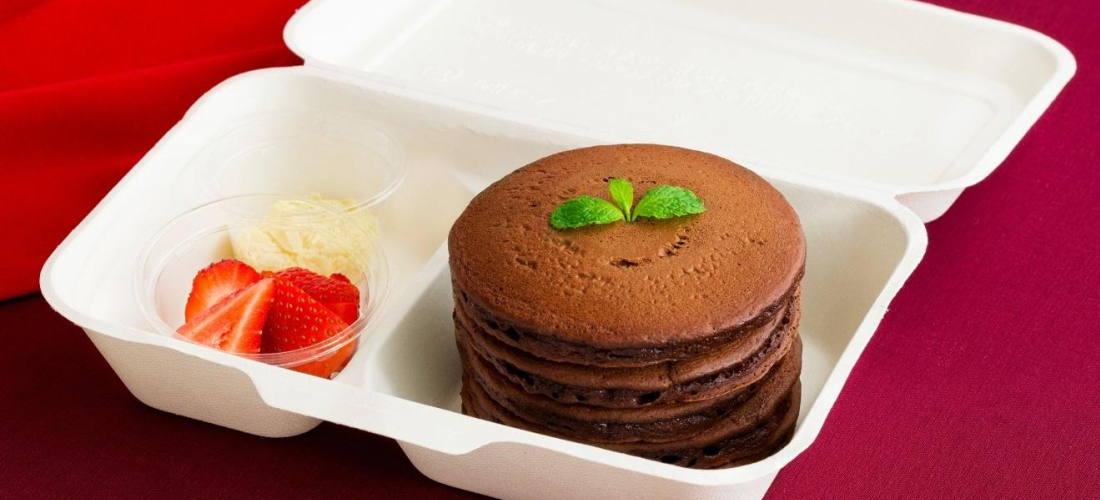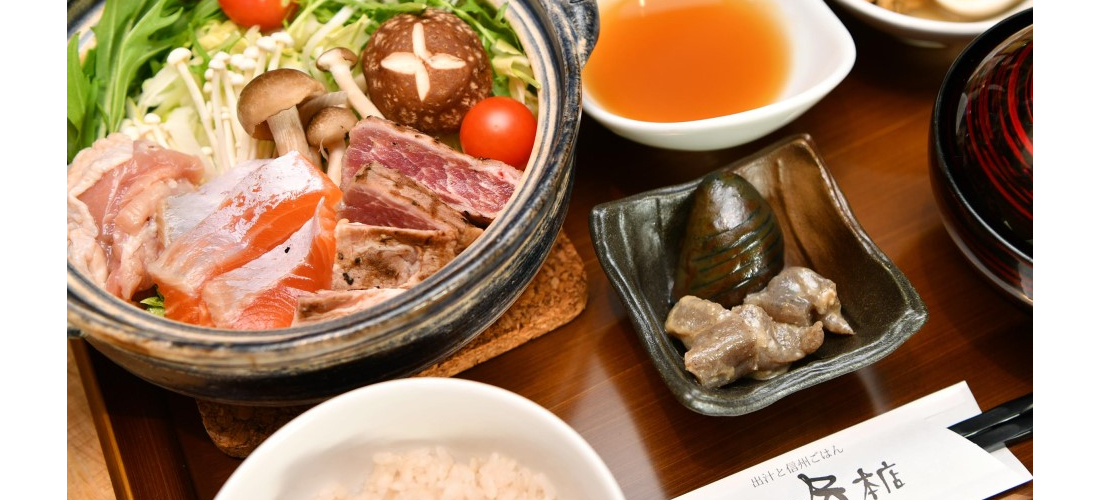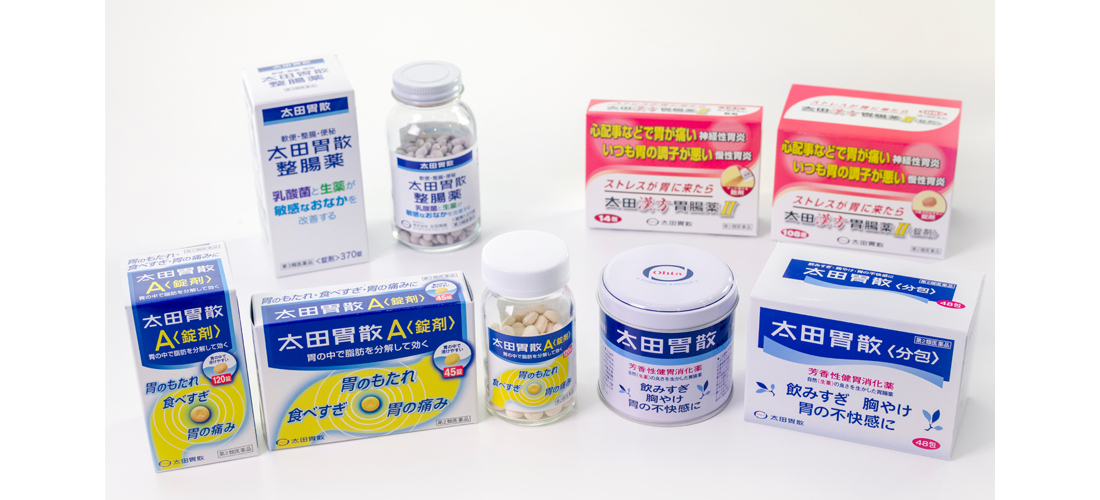Are you spending a week in Tokyo this year? Or maybe 2019 is the year of Osaka? Perhaps a few days in Fukuoka, a weekend in Okinawa, or a trip to Hokkaido? All of these places are a little different, but there are a few things you’ll definitely want to bring (or get ready for) no matter where in Japan you’re heading. So today we’re bringing you a basic list of things not to forget, so you can finish all your travel prep worry-free!
Traveling in Japan: The Basics
Never been to this part of the world before? Don't know what to bring to Japan? In the English-speaking world, it's not uncommon to worry about how different Japan might be from your home country, and packing for the unexpected is difficult! But we've put together a simple travel prep list, with a few obvious items and a few things you might not have thought of, so everything from the moment you board the plane to your last day in Japan will be smooth sailing. Happy travels!
1. A Suitcase/Backpack + An Everyday Bag
These days it's trendy to travel light and only bring carry-on bags, but if you're planning to check a suitcase, don't forget to mark it with a nametag (or something cute like a ribbon). If you've got a simple black suitcase… well, so does everyone else. Do something to make it instantly recognizable on the luggage carousel and you'll thank yourself later.
Heading through the airport, and then the streets of Tokyo, you're not going to want to rely solely on your pockets though! Bring a small or medium-sized bag with you to carry things like your phone and wallet every day, plus the handful of things we mention later in this list. In Japan we recommend you also bring your passport around with you! Pickpocketing, mugging, and other petty theft is really very rare (people frequently reserve seats at cafes with their purse, or even leave their cellphone on the table), and your foreign passport can give you discounts on tickets sometimes. (Foreign visitors can go to Niigata's APALLUSION light show for free in 2019!) Do be careful not to lose it yourself, though!
2. A Pen/Pencil + A Small Notebook
You'll be handed customs and immigration forms while you're onboard the plane over. If you're able to just grab a pen from your everyday bag and fill it in while you're sitting in your seat, it's significantly easier than trying to ask a flight attendant for a pen or (the worst) struggling with all your documents and filling the form out at a table in front of immigration before you get in line. Plus, if you have a little notebook with you, you can use it to jot down any information you need for your plans during the trip, without worrying about wifi or your phone battery.
3. Your Passport!
As we mentioned above, it's easiest to just bring your passport with you, and keep it in a secure place so it doesn't fall out of your bag or anything. You'll need it for certain discounts (like free sunflower viewing), and you can use it to buy lots of things duty-free in Japan. Bigger stores will often have tax-exempt counters, where you can show your passport for the discount. It's always a good idea to make a couple copies of your passport, and perhaps other ID as well, and spread them throughout your luggage before you go (just in case).
4. Tickets + Hotel Reservation Information
These days, a flash of your phone screen will often give hotels and airports all the information they need to check you in and get you going, but there are inherent risks that come with relying on that method. Check ahead of time and print out any info you'll need before you get settled in Japan. Something like a printed hotel reservation comes in handy when you least expect it, like when you realize you need to write the address on your immigration form!
5. Cash, Cards, and a Plan
The world increasingly relies on credit and debit cards for all kinds of payment, and Japan isn't excluded from that… but the country is really a little behind! Cash is still king, and even though many shops do accept cards these days, you'll still see most people paying in cash. If you'd still prefer to use your credit card in Japan when you can, go for it, but make sure you have some cash on you as well for any delicious little hole in the wall restaurants you find. (And don't forget to let your card company know in advance that you'll be traveling! We don't want any mix-ups to cause money emergencies during your trip.) The worst place to exchange cash is the airport, so either get a good rate at your bank at home, or go the simple route and use your card to withdraw cash from ATMs in Japan (you might be charged a fee to do this, but it's often still the best deal.) Some convenience stores, especially 7/11s, have ATMs that accept international cards, and all Japan Post Bank ATMS are fine too!
One more tip: Japan uses a lot of coins, and if you're not used to carefully using them every single time you make a purchase, they're going to build up. Bring a coin purse, or buy a cute one in Japan!
6. Pocket Wifi
Before you go, think about how much you want to use your phone (or other devices) during your travels. In recent years free wifi has popped up in some of Tokyo's public areas, and it's common at cafes, but Japan is not quite the tech wonderland we dream of, and you shouldn't rely on free wifi being anywhere in particular. Which is why, if you're a big instagram user or you rely on google throughout the day, we recommend you grab a pocket wifi device on your way into Japan. You can make reservations in advance, and then just pick up your wifi device at a counter in the airport. This can be pretty reasonable, especially if you split the costs between a few people. We would not suggest using the international roaming provided by your cellphone service provider – it's almost certainly obscenely expensive (so make sure that isn't turned on when you arrive!)
7. Cellphone Essentials
Speaking of using pocket wifi, don't forget a mobile battery! If you're using the internet throughout the day, you'll need to keep that phone charged. Make sure you also have a normal charger with you, of course, and bring earphones for that plane ride!
8. Transportation Passes + Tourist Tickets
There are tickets for all sorts of things in Japan that are only discounted for foreign travelers, and plenty of tickets that should be reserved in advance. For some of these, it can be easier to purchase them before you even leave. Are you going to be taking a lot of Japan Rail trains during your trip? If you want to use the shinkansen (bullet train) to move between cities, a JR Rail Pass can be really cost-effective. If you want to go somewhere very popular like Tokyo Disneyland, Teamlab, the Yayoi Kusama Museum, or the Ghibli Museum, you'll definitely want advance tickets!
9. Offline Google Maps
Going to skip the pocket wifi during your trip? Or maybe you just want to save on data when you can? Well, Google Maps has an "offline map" feature, where you can save the data for a selected area to your phone for offline use. This can be a lifesaver if you get lost in the alleys of Tokyo, so take advantage of it and download the areas you're going to visit before you go!
10. An International Drivers License/Student ID
The most important ID to have with you will always be your passport, but these others can be helpful for different things. Road trips in Japan are increasingly trendy these days, since they're a pretty fun way to get off the beaten path and see some unusual parts of the country, and an international license will have you set to rent a car when you get here. Tokyo, Osaka, and Kyoto are great, of course, but it can be great to venture out into Japan's beautiful countryside, and a car gives you the freedom to do that.
Student IDs are definitely worth bringing for student discounts. Museums, movie theaters, etc. etc. will often have student tickets, which can even be valid for university students, so don't pay more if you don't need to!
11. Emergency Supplies
Last but not least, "emergency supplies" might be a bit of a dramatic way to put it, but on top of toothbrushes and so on, it's not a bad idea to pack a couple of bandaids. A trip to Japan will generally have you on your feet all day every day, with lots of walking, so wear comfortable shoes and bring supplies to deal with blisters! If you're a person who gets periods, check your cycle and prepare accordingly! Pad and tampon options in Japan aren't exactly the same as other countries, so you might want to bring those with you. Don't worry too much about an upset stomach, though. It's not uncommon during travel, but you can easily bring medicine with you or just check out the Japanese version.
____________________________________________
Clearly this list doesn't include the obvious, like clothing and toiletry basics, but we think a quick run-through will help make your trip fun and worry-free! Was it helpful for you? Is there anything you think we're missing? Let us know on our facebook, twitter, or instagram!
If you need more help planning your trip to Japan, here are a few articles you might find particularly helpful.
Japan Travel Tips for Beginners: Essential Things to Know Before Visiting Japan
Tips and Tricks for Driving Around Japan
Buy Souvenirs in Japan Like a Local
The Perfect Destination for Every Season: Monthly Suggestions for Your Trip to Japan
Going to a Japanese Hot Springs with Tattoos ♨ Finding Tattoo Friendly Onsen in Japan
Special Deals For Domestic Flights Within Japan For Overseas Tourists
Details
NAME:All Over Japan
COMMENT
FEATURED MEDIA
VIEW MORE 
A New Tokyo Animal Destination: Relax & Learn About the World’s Animals in Japan
#pr #japankuru #anitouch #anitouchtokyodome #capybara #capybaracafe #animalcafe #tokyotrip #japantrip #카피바라 #애니터치 #아이와가볼만한곳 #도쿄여행 #가족여행 #東京旅遊 #東京親子景點 #日本動物互動體驗 #水豚泡澡 #東京巨蛋城 #เที่ยวญี่ปุ่น2025 #ที่เที่ยวครอบครัว #สวนสัตว์ในร่ม #TokyoDomeCity #anitouchtokyodome

Shohei Ohtani Collab Developed Products & Other Japanese Drugstore Recommendations From Kowa
#pr #japankuru
#kowa #syncronkowa #japanshopping #preworkout #postworkout #tokyoshopping #japantrip #일본쇼핑 #일본이온음료 #오타니 #오타니쇼헤이 #코와 #興和 #日本必買 #日本旅遊 #運動補充能量 #運動飲品 #ช้อปปิ้งญี่ปุ่น #เครื่องดื่มออกกำลังกาย #นักกีฬา #ผลิตภัณฑ์ญี่ปุ่น #อาหารเสริมญี่ปุ่น

도쿄 근교 당일치기 여행 추천! 작은 에도라 불리는 ‘가와고에’
세이부 ‘가와고에 패스(디지털)’ 하나면 편리하게 이동 + 가성비까지 완벽하게! 필름카메라 감성 가득한 레트로 거리 길거리 먹방부터 귀여움 끝판왕 핫플&포토 스폿까지 총집합!
Looking for day trips from Tokyo? Try Kawagoe, AKA Little Edo!
Use the SEIBU KAWAGOE PASS (Digital) for easy, affordable transportation!
Check out the historic streets of Kawagoe for some great street food and plenty of picturesque retro photo ops.
#pr #japankuru #도쿄근교여행 #가와고에 #가와고에패스 #세이부패스 #기모노체험 #가와고에여행 #도쿄여행코스 #도쿄근교당일치기 #세이부가와고에패스
#tokyotrip #kawagoe #tokyodaytrip #seibukawagoepass #kimono #japantrip

Hirakata Park, Osaka: Enjoy the Classic Japanese Theme Park Experience!
#pr #japankuru #hirakatapark #amusementpark #japantrip #osakatrip #familytrip #rollercoaster #retrôvibes #枚方公園 #大阪旅遊 #關西私房景點 #日本親子旅行 #日本遊樂園 #木造雲霄飛車 #히라카타파크 #สวนสนุกฮิราคาตะพาร์ค

🍵Love Matcha? Upgrade Your Matcha Experience With Tsujiri!
・160년 전통 일본 말차 브랜드 츠지리에서 말차 덕후들이 픽한 인기템만 골라봤어요
・抹茶控的天堂!甜點、餅乾、飲品一次滿足,連伴手禮都幫你列好清單了
・ส่องมัทฉะสุดฮิต พร้อมพาเที่ยวร้านดังในอุจิ เกียวโต
#pr #japankuru #matcha #matchalover #uji #kyoto #japantrip #ujimatcha #matchalatte #matchasweets #tsujiri #말차 #말차덕후 #츠지리 #교토여행 #말차라떼 #辻利抹茶 #抹茶控 #日本抹茶 #宇治 #宇治抹茶 #日本伴手禮 #抹茶拿鐵 #抹茶甜點 #มัทฉะ #ของฝากญี่ปุ่น #ชาเขียวญี่ปุ่น #ซึจิริ #เกียวโต

・What Is Nenaito? And How Does This Sleep Care Supplement Work?
・你的睡眠保健品——認識「睡眠茶氨酸錠」
・수면 케어 서플리먼트 ‘네나이토’란?
・ผลิตภัณฑ์เสริมอาหารดูแลการนอน “Nenaito(ネナイト)” คืออะไร?
#pr #japankuru #sleepcare #japanshopping #nenaito #sleepsupplement #asahi #睡眠茶氨酸錠 #睡眠保健 #朝日 #l茶胺酸 #日本藥妝 #日本必買 #일본쇼핑 #수면 #건강하자 #네나이토 #일본영양제 #อาหารเสริมญี่ปุ่น #ช้อปปิ้งญี่ปุ่น #ร้านขายยาญี่ปุ่น #ดูแลตัวเองก่อนนอน #อาซาฮิ

Japanese Drugstore Must-Buys! Essential Items from Hisamitsu® Pharmaceutical
#PR #japankuru #hisamitsu #salonpas #feitas #hisamitsupharmaceutical #japanshopping #tokyoshopping #traveltips #japanhaul #japantrip #japantravel

Whether you grew up with Dragon Ball or you just fell in love with Dragon Ball DAIMA, you'll like the newest JINS collab. Shop this limited-edition Dragon Ball accessory collection to find some of the best Dragon Ball merchandise in Japan!
>> Find out more at Japankuru.com! (link in bio)
#japankuru #dragonball #dragonballdaima #animecollab #japanshopping #jins #japaneseglasses #japantravel #animemerch #pr

This month, Japankuru teamed up with @official_korekoko to invite three influencers (originally from Thailand, China, and Taiwan) on a trip to Yokohama. Check out the article (in Chinese) on Japankuru.com for all of their travel tips and photography hints - and look forward to more cool collaborations coming soon!
【橫濱夜散策 x 教你怎麼拍出網美照 📸✨】
每次來日本玩,是不是都會先找旅日網紅的推薦清單?
這次,我們邀請擁有日本豐富旅遊經驗的🇹🇭泰國、🇨🇳中國、🇹🇼台灣網紅,帶你走進夜晚的橫濱!從玩樂路線到拍照技巧,教你怎麼拍出最美的夜景照。那些熟悉的景點,換個視角說不定會有新發現~快跟他們一起出發吧!
#japankuru #橫濱紅磚倉庫 #汽車道 #中華街 #yokohama #japankuru #橫濱紅磚倉庫 #汽車道 #中華街 #yokohama #yokohamaredbrickwarehouse #yokohamachinatown

If you’re a fan of Vivienne Westwood's Japanese designs, and you’re looking forward to shopping in Harajuku this summer, we’ve got important news for you. Vivienne Westwood RED LABEL Laforet Harajuku is now closed for renovations - but the grand reopening is scheduled for July!
>> Find out more at Japankuru.com! (link in bio)
#japankuru #viviennewestwood #harajuku #omotesando #viviennewestwoodredlabel #viviennewestwoodjapan #비비안웨스트우드 #오모테산도 #하라주쿠 #日本購物 #薇薇安魏斯伍德 #日本時尚 #原宿 #表參道 #japantrip #japanshopping #pr

Ready to see TeamLab in Kyoto!? At TeamLab Biovortex Kyoto, the collective is taking their acclaimed immersive art and bringing it to Japan's ancient capital. We can't wait to see it for ourselves this autumn!
>> Find out more at Japankuru.com! (link in bio)
#japankuru #teamlab #teamlabbiovortex #kyoto #kyototrip #japantravel #artnews
Photos courtesy of teamLab, Exhibition view of teamLab Biovortex Kyoto, 2025, Kyoto ® teamLab, courtesy Pace Gallery

Japanese Makeup Shopping • A Trip to Kamakura & Enoshima With Canmake’s Cool-Toned Summer Makeup
#pr #canmake #enoshima #enoden #에노시마 #캔메이크 #japanesemakeup #japanesecosmetics

⚔️The Robot Restaurant is gone, but the Samurai Restaurant is here to take its place. Check it out, and don't forget your coupon!
🍣신주쿠의 명소 로봇 레스토랑이 사무라이 레스토랑으로 부활! 절찬 쿠폰 발급중
💃18歲以上才能入場的歌舞秀,和你想的不一樣!拿好優惠券去看看~
#tokyo #shinjuku #samurairestaurant #robotrestaurant #tokyotrip #도쿄여행 #신주쿠 #사무라이레스토랑 #이색체험 #할인이벤트 #歌舞伎町 #東京景點 #武士餐廳 #日本表演 #日本文化體驗 #japankuru #japantrip #japantravel #japanlovers #japan_of_insta

Japanese appliance & electronics shopping with our KOJIMA x BicCamera coupon!
用JAPANKURU的KOJIMA x BicCamera優惠券買這些正好❤️
코지마 x 빅 카메라 쿠폰으로 일본 가전 제품 쇼핑하기
#pr #japankuru #japanshopping #kojima #biccamera #japaneseskincare #yaman #dji #osmopocket3 #skincaredevice #日本購物 #美容儀 #相機 #雅萌 #日本家電 #일본여행 #면세 #여행꿀팁 #일본쇼핑리스트 #쿠폰 #일본쇼핑 #일본브랜드 #할인 #코지마 #빅카메라 #japankurucoupon

